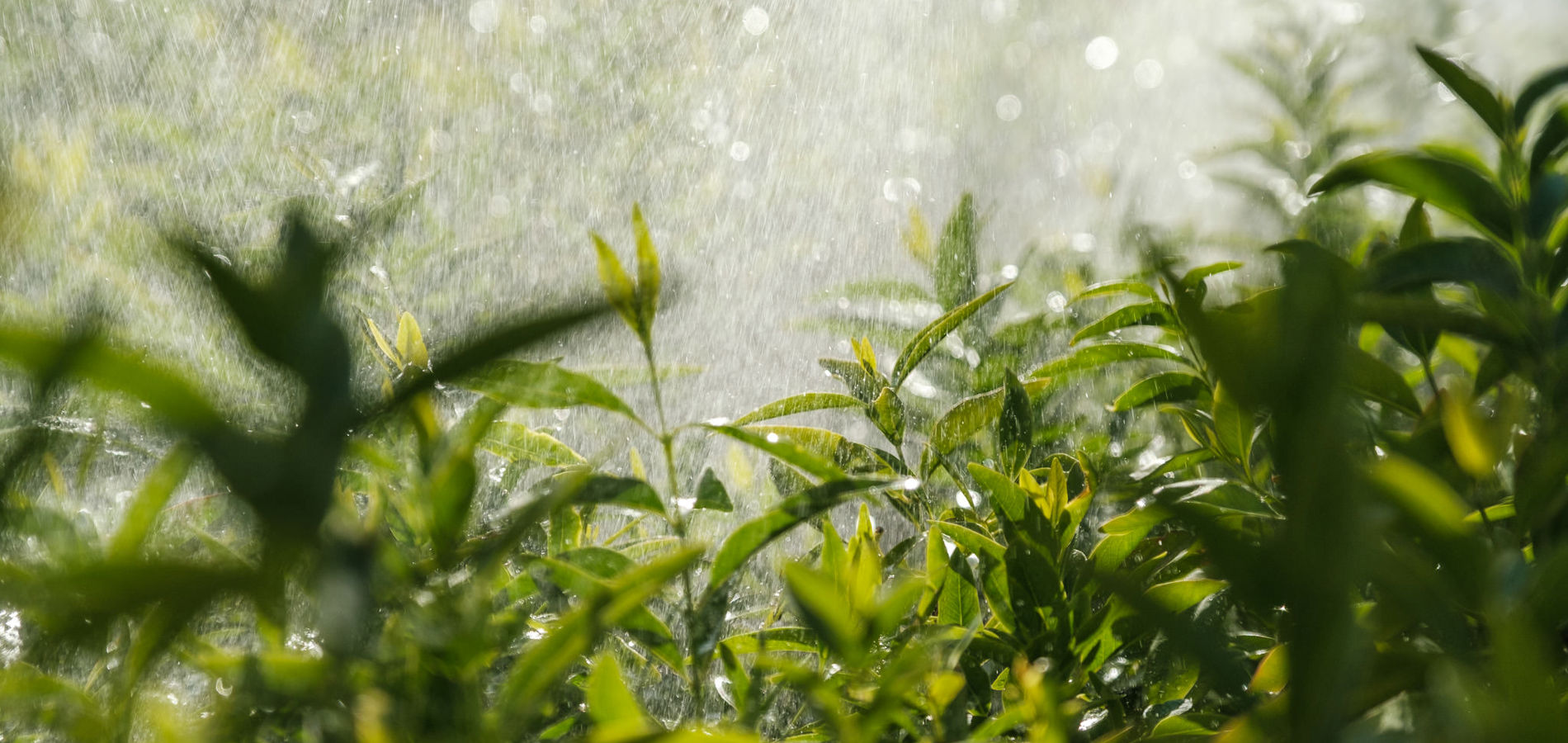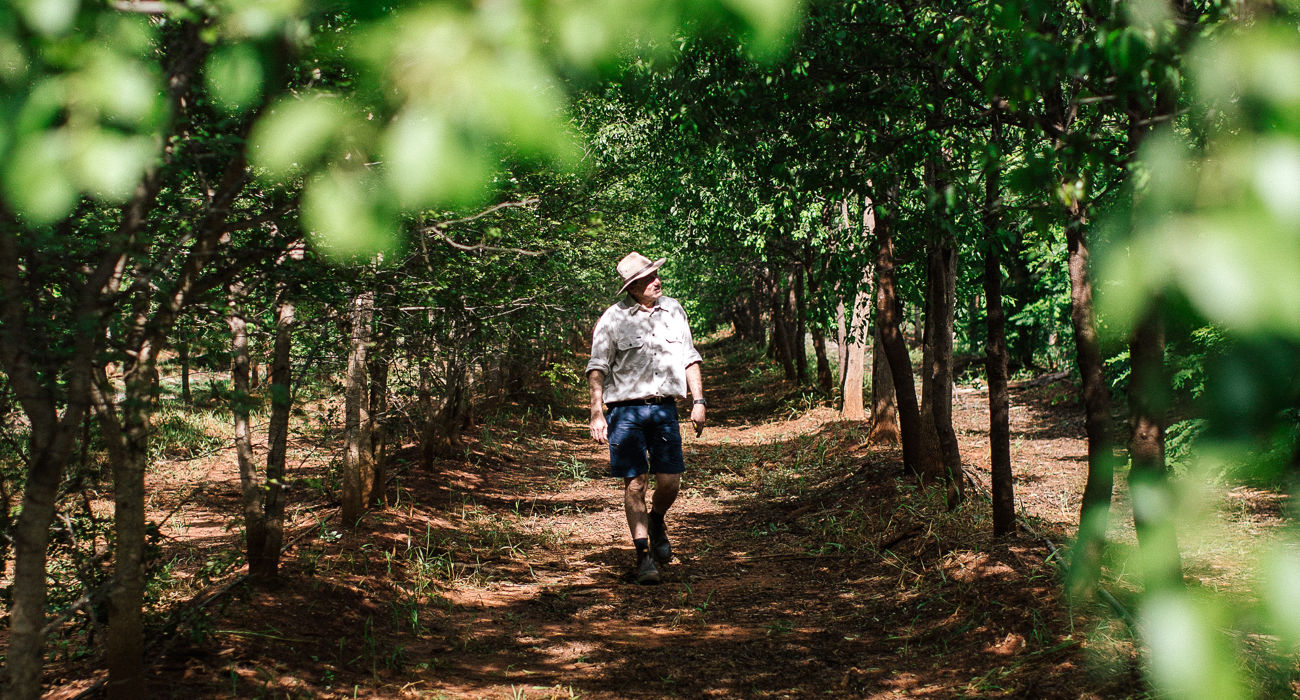Why do you think it is important for Quintis to grow Indian sandalwood?
I started working with Sandalwood in the mid-1990s when little was known about the Genus. All species were being unsustainably harvested in their natural environment and to an extent, this is still the case today in some markets. The pleasure for me is seeing the industry grow from small research trials to the successful plantations we see today.
I have worked in countries where sandalwood has a very high importance in both a cultural and economic sense. The role Quintis must play in the sandalwood community is important. I believe we have an obligation to not only be custodians of the species in Australia but to assist in the protection of the genus as a whole, and develop the industry, particularly in Australia and across our western pacific neighbours.
How has your experience shaped your views of forestry in the 21st century?
I have worked within the forest industry for over 30 years. I have worked with exotic pine monocultures, native eucalypt monocultures, high-value tropical hardwood plantations (teak, mahogany), and of course sandalwood plantations. I believe the plantation forest industry is underrated in its importance. We provide an essential product to processing industries, from the traditional wood for logs that go into housing and chip for the production of paper to improving water quality and soil conservation, providing habitat to wildlife and improving diversity, removing carbon and locking it into a renewable resource.
Forestry in the 21st century provides benefits across several sections of society, providing jobs in the rural sector (working for a forest producer, contractor, staff etc, providing environmental benefits in carbon capture, soil, and water conservation. The industry has also become more technical, with the use of computerised systems to accurately work outgrowth requirements for more efficient management of resources. We use data logging soil probes and sap flow meters, logging weather stations, computerised irrigation systems to ensure we optimised irrigation, and the use of drones and satellites for inventory. All of these are helping forestry in the 21st century is becoming more precise.
Almost my whole working career I’ve worked with sandalwood – one species or another. So, I’m very familiar with it, it’s like an old friend. It’s very special to me.
Ken Robson,
Quintis Leader in Forestry Research & Development
What is your role at Quintis and how does it differ from what you have done in the past?
I am the technical group leader for forestry research & development. This involves managing the forestry research programme and the forest protection programme. I have a dedicated and enthusiastic team who provides the company with the expertise to ensure the plantation stays healthy and actively growing. We work across a wide range of disciplines, for example, developing weed control methods that are effective, efficient, and environmentally friendly, implementing an integrated pest management system to ensure that pests are kept below a threshold, sampling leaf and soil across the estate to monitor the nutrient health of the trees, managing and improving our sandalwood breeding program, to name a few.
Why is it important for the Forestry team to continue to research and investigate Indian sandalwood?
Although we have discovered a lot about growing sandalwood, it is a case of ‘the more we find out, the more we realise we don’t know'. Because of the parasitic nature of sandalwood, much of what is biologically important for growth happens below the ground, which is not easy to see. We still need research into many of the physiological aspects of the sandalwood-to-host relationship. There are also modifications and improvements in a number of silvicultural operations that we need to adapt to suit the mixed plantation, taking into account both hosts and sandalwood.
What are the top three things you have learnt whilst working with Indian sandalwood?
- The phenotype of individuals changes dependent on their environment (they look different depending on the site). Our trees in the Queensland plantation look slightly different to the trees in our Northern Territory plantations.
- Sandalwood is a very resilient species. It can adapt to a changing environment. For example, although it naturally typically grows in well-drained dry sites, it can grow just as well in sites with heavy soils as sandy soils.
- Many people and cultures have an affinity with sandalwood, and it attracts a lot of attention. When you say you work growing sandalwood, almost everyone is interested. I think this is partially due to the mystique, but also because of the unusual parasitic nature of growing it.
When you’re not working, how do you relax/unwind/have fun?
I consider myself a 'Jack of all trades', I will have a go at anything to keep busy. I am currently building a pergola and extending the deck in the backyard. I like working with wood, I have made several pieces of furniture and recently started working with timber and resin. I also like to fix and repair old things. I recently renewed an old highchair for my granddaughter. Which she loves!
I follow motor racing, particularly the supercars and enjoy watching my team, the 'North Queensland Cowboys' during the footy season. I am an avid gardener, enjoy a good novel to relax, and go for a ride on my Harley.

